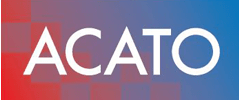ISO 9001 Checklist for Successful Audits

Your ISO 9001 Compliance Checklist for Smoother Audits: The Complete Guide to Certification
Getting ready for your ISO 9001 audit starts with a solid compliance checklist. This tool maps out every requirement, links it to tangible proof, and tracks any necessary fixes. Our comprehensive guide provides a detailed ISO 9001 compliance checklist, walks you through preparing for both internal and certification audits, covers essential documentation, explores how to integrate IT security and data management, and points out common hurdles with practical solutions. You’ll discover:
- What an ISO 9001 compliance checklist is and why it’s crucial
- How to plan and conduct internal audits, plus manage non-conformities
- Best practices for documentation requirements and control
- The stages of certification audits, understanding UKAS accreditation, and what to steer clear of
- Integrating IT security, data protection, and risk-based thinking into your QMS
- How to adapt Acato’s checklist template for ongoing improvement
- Strategies for overcoming typical audit challenges
Whether you’re a small business, a public sector organisation, or a large enterprise, this checklist will elevate your Quality Management System and simplify your certification journey.
What Exactly Is an ISO 9001 Compliance Checklist and Why Is It So Important?
An ISO 9001 compliance checklist is your structured roadmap. It breaks down each Quality Management System clause, outlines specific audit questions and the evidence needed, and helps you track corrective actions to ensure audit success. By systematically linking the standard’s requirements to your day-to-day operations, you can identify and close any gaps, confidently demonstrating your organisation’s conformity. For instance, connecting Clause 8 operational steps to your documented records means you won’t face last-minute surprises during an audit.
ISO 9001 Checklist and Compliance: Your Path to Conformity
An ISO 9001 compliance checklist is a structured tool that defines each Quality Management System clause, specifies audit questions and evidence requirements, and tracks corrective actions to ensure audit success. By systematically mapping standard requirements to real-world processes, organisations eliminate gaps and demonstrate conformity.
Qualio, ISO 9001 compliance checklist([2025])
This reference underpins the article’s central theme by clarifying the purpose and significance of an ISO 9001 compliance checklist.
Use this checklist to:
- Ensure you’ve covered all ISO 9001:2015 clauses thoroughly
- Align your processes with audit criteria and the evidence auditors will look for
- Track your implementation progress and manage corrective actions effectively
A well-crafted checklist is the bedrock for achieving reliable audit results and fostering continuous improvement under ISO 9001.
What Does ISO 9001 Actually Require for Quality Management Systems?
ISO 9001 mandates a Quality Management System that encompasses your organisation’s context, leadership commitment, strategic planning, essential support functions, operational processes, performance evaluation, and a drive for continual improvement.
Key requirements include:
- Context of the organisation – Understanding your internal and external factors, and the needs of interested parties
- Leadership – Demonstrating top management’s commitment, establishing a clear quality policy, and setting achievable objectives
- Planning – Implementing risk-based thinking, managing opportunities, and defining measurable quality objectives
- Support – Ensuring adequate resources, competence, awareness, effective communication, and controlled documented information
- Operation – Defining product/service requirements, controlling processes, and managing changes effectively
- Performance evaluation – Monitoring, measuring, analysing, and reviewing your QMS performance
- Improvement – Handling non-conformities, implementing corrective actions, and driving continual improvement
These requirements form the essential framework for a compliant QMS and guide the development of your audit checklists.
How Does a Compliance Checklist Help You Ace Your Audits?
A compliance checklist is your secret weapon for successful audits. It provides clear audit questions, helps you link requirements directly to evidence, and flags potential non-conformities early on.
- It defines the specific audit criteria for every clause
- It maps out the records and documents that serve as proof of conformity
- It tracks the implementation and verification of corrective actions
By using a checklist, your team can proactively address issues and present auditors with a seamless narrative of your QMS implementation.
What Are the Core Principles Driving ISO 9001 Compliance?
- Customer focus – Consistently meeting and exceeding stakeholder expectations
- Leadership – Ensuring a clear vision and unity of purpose throughout the organisation
- Engagement of people – Empowering and involving competent individuals at all levels
- Process approach – Managing activities and resources as interrelated processes
- Improvement – Continuously seeking to enhance performance
- Evidence-based decision making – Basing decisions on the analysis of data and information
- Relationship management – Fostering mutually beneficial relationships with suppliers and partners
Embracing these principles ensures a risk-aware, process-driven approach to compliance and audit readiness.
How to Gear Up for Your ISO 9001 Internal Audit Using a Checklist?

Preparing for an internal audit with a checklist involves defining the audit’s scope, assigning qualified auditors, gathering all necessary documented information, and practising audit questions to confirm conformity. This proactive approach helps uncover any non-conformities and strengthens your processes well before the official certification audit.
What Are the Key Steps in Planning and Executing an Internal Audit?
- Define scope and criteria – Select the QMS processes you’ll audit and reference the relevant ISO 9001 clauses
- Appoint competent auditors – Ensure objectivity and the necessary expertise
- Develop an audit plan – Schedule dates, allocate resources, and prepare your checklists
- Conduct a document review – Verify your documented information before any site visits
- Perform the on-site audit – Interview staff, observe processes in action, and gather evidence
- Report your findings – Document any non-conformities and areas for improvement
- Follow up – Implement corrective actions and confirm their effectiveness
A well-structured plan guarantees comprehensive coverage and clear audit trails.
What Kind of Internal Audit Questions Should You Anticipate?
Internal audit questions typically mirror the ISO 9001 clauses and focus on your processes, records, and responsibilities. Here are some common examples:
- Clause 4: “How has top management identified the relevant internal and external issues affecting your organisation?”
- Clause 5: “What evidence demonstrates top management’s commitment to the QMS?”
- Clause 6: “How do you identify and address risks and opportunities within your processes?”
- Clause 7: “How are resources allocated to ensure personnel competence?”
- Clause 8: “What controls are in place for the provision of products or services?”
- Clause 9: “How is performance data collected, analysed, and used?”
- Clause 10: “What corrective actions have been implemented for previous non-conformities?”
Anticipating these questions will help you prepare your evidence and enhance the transparency of your processes.
How Do You Identify and Manage Non-Conformities During Audits?
Non-conformities are simply deviations between your actual performance and the ISO 9001 requirements. Here’s how to manage them effectively:
- Identify – Use your audit observations and checklist findings
- Record – Log each non-conformity, noting the relevant clause and supporting evidence
- Analyse root cause – Determine the underlying reasons for the process failure
- Implement corrective action – Define the necessary actions, assign responsibilities, and set deadlines
- Verify effectiveness – Conduct follow-up audits to ensure the issue is resolved
This structured approach to managing non-conformities is key to driving continual improvement and ensuring you’re ready for certification audits.
What Role Does Management Review Play in Achieving Audit Success?
Management review is a critical strategic assessment of your QMS performance, and it’s essential for audit success. It covers:
- Key QMS performance metrics and the outcomes of your audits
- Customer satisfaction levels and feedback trends
- The effectiveness of your processes and the results of risk-based thinking
- The adequacy of resources and opportunities for improvement
- Any changes in your organisation’s context or strategic objectives
By involving top management in regular reviews, your organisation demonstrates strong leadership commitment and drives the implementation of effective corrective and preventive actions.
What Are the ISO 9001 Documentation Requirements You Need to Check?
ISO 9001 documentation requirements ensure your QMS is implemented consistently. This documented information serves as proof of conformity and enhances transparency during audits.
Which Documents and Records Are Absolutely Mandatory for ISO 9001?
Your mandatory document and record checklist should include:
- The scope of your QMS (often documented in a Quality Manual, though optional in ISO 9001:2015, it’s frequently retained)
- Your quality policy and quality objectives
- Your risk and opportunity register
- Documented procedures for key processes (where applicable)
- Records demonstrating competence, training, infrastructure, and work environment
- Results from monitoring and measurement activities
- Records from internal audits and management reviews
Mandatory Documentation for ISO 9001: Ensuring QMS Integrity
ISO 9001 requires specific documented information to ensure the effective operation of a Quality Management System (QMS). This includes documents like the scope of the QMS, quality policy, and quality objectives, as well as records such as calibration and maintenance records, competence records, and results of internal audits.
Effivity, Mandatory Documentation as Per ISO 9001:2015 Standard([2019])
This citation reinforces the article’s section on documentation requirements by detailing the essential documents and records needed for ISO 9001 compliance.
How Can You Effectively Control and Maintain Your Documented Information?
Effective document control prevents outdated or unauthorised documents from being used. Key measures include:
- Version control – Assign clear revision numbers and dates to all documents
- Access control – Limit editing rights to only authorised personnel
- Review and approval – Ensure management sign-off before any document is released
- Retention and disposal – Define how long documents should be kept and establish secure disposal methods
What Are the Best Practices for Keeping Records and Gathering Evidence?
To manage your records and evidence effectively:
- Establish a centralised record repository with organised storage
- Create clear traceability links between your processes and the associated records
- Implement regular backups and secure access protocols
- Conduct periodic record audits to confirm completeness and accuracy
Consistent evidence management makes it easier for auditors to verify your compliance and demonstrates your ongoing adherence to the standard.
How to Prepare for Your ISO 9001 Certification Audit?

Getting ready for your certification audit involves a final readiness check, selecting the right certification body, and addressing any known risks to ensure a smooth experience during both Stage 1 and Stage 2 audits.
What Are the Different Stages of an ISO 9001 Certification Audit?
| Audit Stage | Purpose | Key Activity |
|---|---|---|
| Stage 1 Audit | Assessing your readiness, including documentation and site conditions | Reviewing your QMS documentation and scope, evaluating site readiness |
| Stage 2 Audit | Verifying the implementation and effectiveness of your QMS | Conducting an on-site evaluation of your processes and records |
| Surveillance Audits | Ongoing monitoring of your compliance after certification | Periodic audits to ensure continued adherence to QMS requirements |
How Do You Select the Right Certification Body and Understand UKAS Accreditation?
Choosing a certification body accredited by the United Kingdom Accreditation Service () is vital for ensuring your certification is recognised globally. When selecting a body, verify:
- Their UKAS accreditation status on the UKAS website
- That their certification scope matches your organisation’s products and services
- Their experience in your industry and the competence of their auditors
- The clarity of their contract terms and audit schedules
What Exactly Is UKAS Accreditation?
UKAS (United Kingdom Accreditation Service) is the national accreditation body appointed by the government to assess and accredit organisations that provide services like certification, testing, and inspection. Accreditation by UKAS demonstrates the competence and reliability of these evaluators, instilling confidence in their customers.
UKAS, The UK Accreditation Body([2025])
This explanation is relevant to the article as it clarifies the importance of selecting a UKAS-accredited certification body to ensure global recognition and impartial auditing.
What Common Mistakes Should You Avoid During Certification Audits?
To help ensure you achieve certification smoothly, avoid these common pitfalls:
- Incomplete evidence – Failing to clearly link your processes to documented records
- Uncontrolled documents – Using outdated procedures during the audit
- Ignored risks – Overlooking risk assessments for critical processes
- Insufficient training – Auditors finding staff unable to explain their processes
By proactively preventing these issues, you can reduce audit stress and speed up your certification process.
How Does ISO 9001 Compliance Integrate with IT Security and Data Management?
Incorporating IT security and data management into your QMS helps you address modern cyber risks and regulatory demands, making your audit process more robust and building greater stakeholder trust.
ISO 9001 and Cybersecurity Integration: A Synergistic Approach
Integrating IT security and data management into a QMS, as expected by ISO 9001, addresses evolving cyber risks and regulatory requirements. This integration strengthens audit resilience and stakeholder trust.
TrustCloud, Boost trust with ISO 9001 and security integration([2024])
This citation supports the article’s discussion on IT security and data management by highlighting the benefits of integrating these aspects into a QMS.
What IT Security Controls Are Expected Within an ISO 9001 QMS?
ISO 9001 anticipates that organisations will implement controls such as:
- Robust access controls and user authentication methods
- Data encryption and secure backup procedures
- Clear incident response and reporting protocols
- Effective change management for all IT systems
Embedding these controls within your QMS demonstrates a proactive approach to protecting your valuable information assets.
How Can You Ensure Data Protection Compliance Within Your QMS?
To align with data protection regulations (like GDPR), ensure your QMS includes:
- Clear data classification and handling guidelines
- Processes for consent management and transparent privacy notices
- Defined retention and deletion policies for data
- Established data breach response workflows
This alignment highlights your commitment to both quality management principles and legal compliance.
How Does Risk-Based Thinking Help Manage IT and Data Management Risks?
Risk-based thinking requires you to:
- Identify potential IT and data threats
- Assess the likelihood and potential impact of these threats
- Plan mitigation strategies, including controls and safeguards
- Monitor the effectiveness of these measures through regular reviews
Addressing IT risks through this systematic lens strengthens your security posture and improves your audit preparedness.
What Are the Best Practices for Business Continuity Planning in IT?
Effective business continuity planning in IT involves:
- Conducting business impact analyses for your critical systems
- Developing recovery strategies (e.g., redundancy, cloud failover)
- Regularly testing your backup and restoration procedures
- Establishing clear communication plans for stakeholders during any disruptions
Robust continuity planning ensures your processes remain resilient and supports ISO 9001’s focus on maintaining performance continuity.
How to Use an ISO 9001 Checklist Template for Effective QMS Implementation?
Customising a checklist template can significantly streamline your QMS rollout, ensure your processes align with ISO 9001 clauses, and embed a culture of continuous improvement.
What Are the Steps to Customise and Implement the Checklist Template?
To tailor Acato’s checklist template for your specific organisation:
- Assess your organisational context – Identify all relevant processes and stakeholders
- Map template clauses – Align each clause of the standard with your existing procedures
- Assign responsibilities – Designate clear ownership for processes and audits
- Integrate with your systems – Embed checklists into your document control and workflow systems
- Train your personnel – Ensure your staff understand the criteria and evidence requirements
By following these steps, you can accelerate your QMS implementation and ensure consistent processes that lead to audit readiness.
How Does the Checklist Support Continuous Improvement and Ongoing Compliance?
A dynamic checklist actively fosters ongoing enhancement by:
- Monitoring trends in non-conformities and the effectiveness of corrective actions
- Facilitating updates to procedures to address new risks and opportunities
- Tracking key performance metrics and the outcomes of management reviews
Regularly reviewing your checklist helps drive compliance and embeds a culture of continuous quality improvement.
Where Can You Find Expert Support and Training for ISO 9001?
Acato provides comprehensive ISO 9001 services, including expert consultancy, certification support, and tailored training programmes. You can:
- Achieve ISO 9001 certification with expert guidance through our ISO 9001 Certification – Acato service
- Learn more about the ISO 9001 implementation process via our ISO 9001 Process – Acato resources
Partnering with Acato ensures you benefit from industry best practices and accelerate your journey to audit success.
What Are Common ISO 9001 Audit Challenges and How Can You Overcome Them?
Organisations often encounter similar audit challenges. Understanding these common issues and applying targeted solutions can significantly improve your audit outcomes and the overall maturity of your QMS.
Which Non-Conformities Are Most Frequently Identified in Audits?
Common non-conformities often include:
- Outdated or uncontrolled documented procedures
- A lack of documented evidence for management review inputs and outputs
- Incomplete records of process performance
- Irregular internal audit schedules and inadequate follow-up on findings
By recognising these trends, you can strengthen your controls and prepare more robust evidence for your audits.
How Can You Address and Prevent Recurring Audit Issues?
To effectively resolve recurring issues, implement:
- Thorough root cause analysis – Pinpoint the systemic failures leading to the problem
- Corrective and preventive actions – Define and implement effective solutions
- Ongoing training – Reinforce understanding of processes and requirements
- Performance monitoring – Measure the effectiveness of your corrective actions
This continuous cycle builds resilience and reduces the likelihood of repeat findings.
How Can a Robust Checklist Reduce Audit Risks and Enhance Outcomes?
A robust checklist minimises audit risks by:
- Ensuring comprehensive coverage of all relevant clauses
- Mapping clear evidence trails for each requirement
- Enabling the early detection of potential non-conformities
- Engaging management through structured review prompts
By integrating these elements, your QMS gains greater audit transparency and demonstrates sustained compliance.
Consistently using this ISO 9001 compliance checklist will not only simplify your audit preparation but also embed a strong culture of quality and risk-based improvement. For a downloadable template tailored to your QMS, explore our ISO 9001 Template for QMS Documentation at Acato, and fast-track your path to certification with expert guidance.

